A NEW ROAD KING — PART 1 . . . selecting a Milwaukee-Eight replacement motorcycle
09/14/2017
A Stage IV, 121 hp, 2018 Road King Special all tricked out and ready to roll. This multi-part article takes the reader through the decision to trade-up, the selection of a replacement, the modifications chosen, and my on the road assessment of this remarkable Harley-Davidson motorcycle.
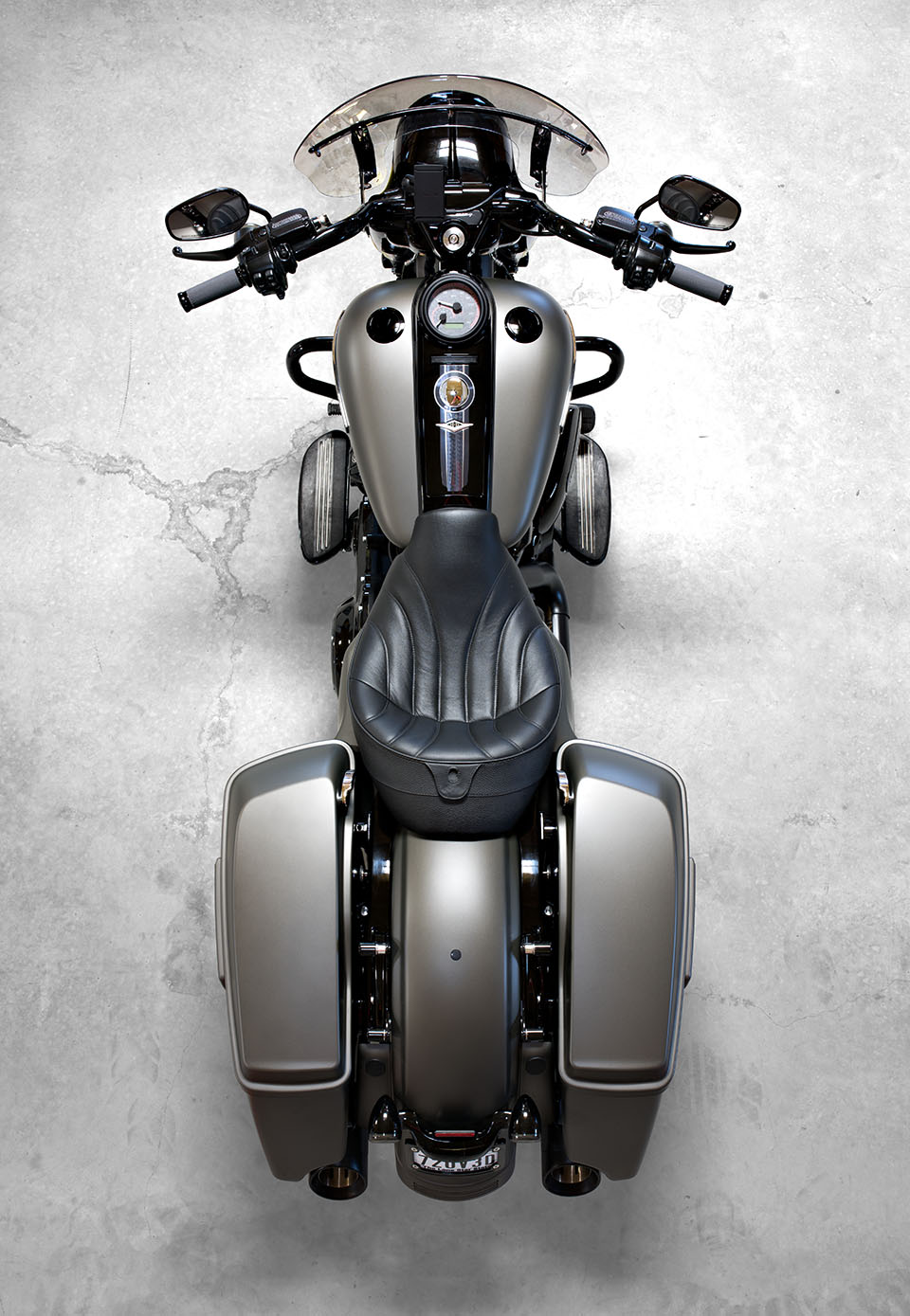
This image was shot with a Nikon D810 + Sigma ART 35mm f/1.4 @ f/11 using shutter delay with a remote trigger
Taking Stock of The Current Stable Contents
When is it time to trade-up to a new Harley-Davidson and when is it time to down-size to a single motorcycle in the barn? Hard choices! I love both the 2010 Dyna Fat Bob and the 2012 Road King Classic. Both were purchased new. Both have been highly personalized with many functional and cosmetic modifications. Both are Stage I power trains (plus Andrews TW48 cams on the Road King) and both have been dyno tuned by Bob Lobenberg, Hayward, CA. Both have had their suspension systems upgraded and both handle better than their stock siblings.
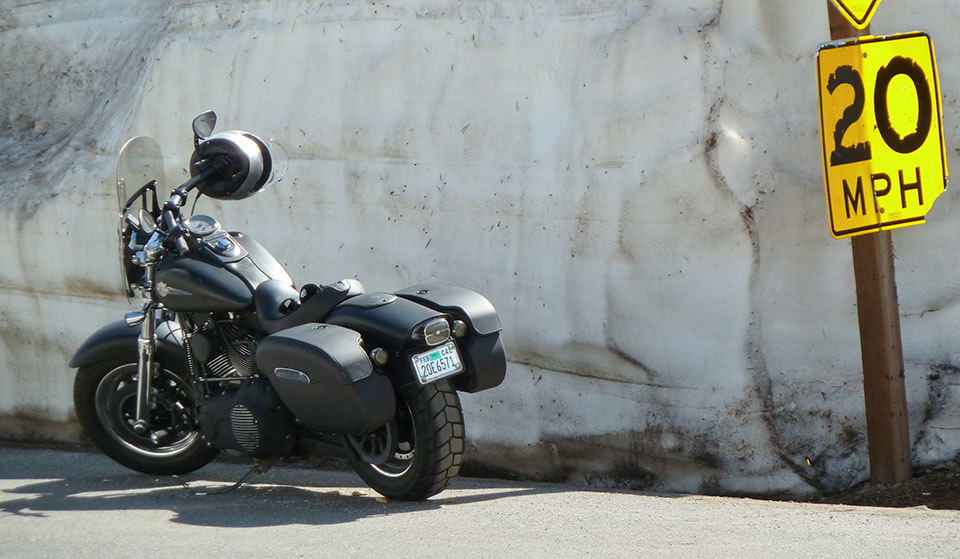
Early summer of 2011, over 9,000 feet, Sierra Nevada Mountains, Mono Pass, wall of compacted snow
Each has rather different riding characteristics and appearance. The Dyna is a hot-rod, handles well enough in the corners that I frequently scrap the heal of my boot getting around curves at speed. The Road King is a comfortable long distance cruiser that soaks up the miles and the bumps with elegance even after the suspension changes tightened things up a bit.
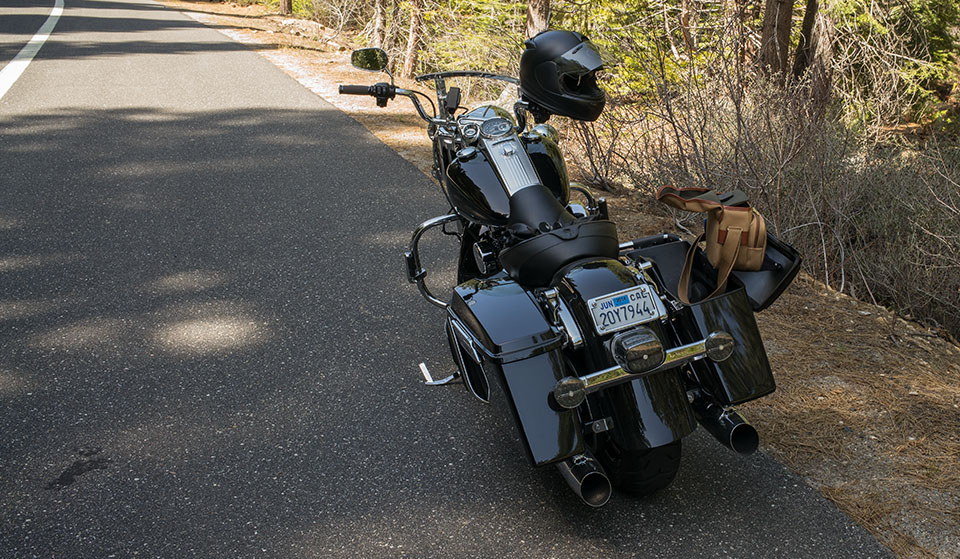
Summer of 2013, Sierra Nevada Mountains, somewhere near Yosemite
Both were purchased in California and both have taken me across the U.S. and back on long, aimless trips as I looked for someplace I could call home, my California residency was a temporary thing while I looked after my folks in their latter years.
Changing Conditions
On my way home from one such trip I was heading for Fredericksburg, Texas after spending a morning at the Fort Chadbourne museum. It was my intention to ride the Three Sisters (or Twisted Sisters) the following day, which I did. However, as I was riding from Bronte to Ballinger something in the back of my brain said "This is the place to call home." By the end of October that year, 2013, I was a Texas resident, living in a ghost town far from any city. This was farm country.
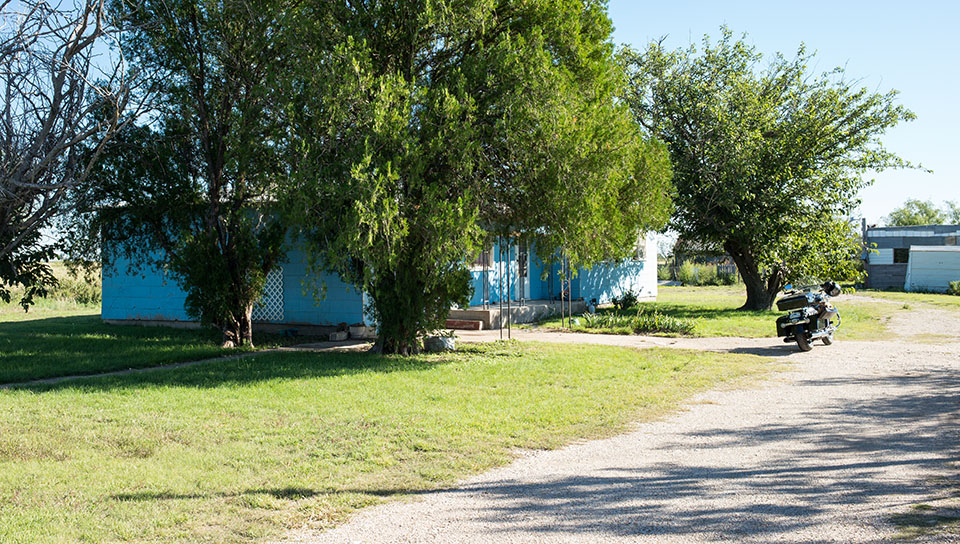
The (temporary) Texas house the day I passed papers
All this is a long-winded way of saying my transportation needs changed with the move to Texas. Living in the boonies requires a 4-wheeled road vehicle and a trailer so I purchased a Jeep Sport and a trailer to haul building materials and other large heavy stuff. While both bikes together were still racking up more miles than the Jeep it became clear one of them should go and unfortunately the logical choice, the Fat Bob, was a lot more fun to ride than the Road King. At the time there was no thought of trading in the Road King, it was far too practical. The situation remained unchanged and unresolved for four years.
A Surprise from Harley-Davidson
All that changed when Harley released the Milwaukee-Eight engine and a new touring chassis for the 2017 model year. This new engine was not a renovation to the Twin Cam with patched-up heads that could cool the exhaust port with an antifreeze mixture. It was a completely new engine, redesigned from the bottom end up. Finding good technical info was difficult and the engine had yet to be field-tested in end-user hands for the requisite year that is needed to shake out all the little things that require tweaking in any new design. So, in late 2016 the Milwaukee-Eight was an intellectual interest, the thought of buying a new bike had not quite crossed my mind yet.
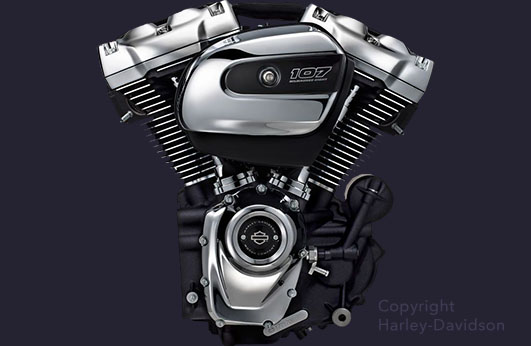
The new Milwaukee-Eight engine
As an intellectual interest there were aspects of the new design that had big question marks attached, at least they did in my mind. The addition of a counter balancer was a concern, the Twin Cam powering the 2012 Road King sure didn't need one. Then there was the matter of two versions of the 4-valve heads, one for oil cooling and one for water cooling. This sounded like some bikes were getting the short end of the straw. The big plus in my mind was the larger diameter crankpin. It was still press-fit, an assembly method which had proven to be less than adequate for larger displacement upgrades.
I put the matter on the back burner and began collecting articles that had technical information on the new engine for later study. Once the M-8 had been in rider's hands for a year without any significant mechanical issues it was time to pull out the technical material and give it a good going over.
I took a few days off to study all the collected materials. The more I studied the information the more I became convinced that this engine was a whole new package, not just an embellished Twin Cam. For the first time since purchasing the 2012 Road King I began to think about trading it in on a new Harley, indeed, I was convinced. The next step would be to find a suitable Touring model.
Selecting the M-8 Platform
The idea was to trade-in both the 2010 Fat Bob and 2012 Road King Classic on one new bike. The AIM Dealer's Expo was still a couple of weeks away so the 2018 models were not yet released. Decisions had to be based on the 2017 models with the assumption there would be few changes to the 2018 Touring bikes just one year after the entire lineup had been upgraded to the new M-8 engine and touring frame.
Fairing or no fairing, that was the question that needed an answer before any other decisions could be made. All my riding friends seem to think anyone who can afford a faired bike is crazy if they don't. Back in 2012 I selected the Road King because I didn't want the large dashboard of a faired bike blocking out so much of my forward field of view. Perhaps I should revisit this issue. I called a friend who had just purchased a 2017 gleaming glossy white Street Glide. He volunteered to ride it over to my place so I could check out a faired touring bike in the wild so to speak and have a look at the M-8 engine after it had been on the road awhile. The M-8 engine was indeed quieter than a Twin Cam but not really quiet. Sitting on the bike it was clear there was no problem seeing what needed to be seen when riding down the road, but that wasn't the issue for me. Anything that blocked out my forward vision and wasn't absolutely necessary was unacceptable. The new bike would have to be built on the Road King platform, nothing else would do.
Creating an Acceptable Rendition
The aesthetics of my 2010 Dyna Fat Bob were much closer to the ultimate motorcycle archetype that floated around in the back of my mind than was the 2012 Road King. Even after carefully tweaking the Road King's appearance it always looked a bit clunky and ponderous to my eye. It did attract a lot more positive attention than the Fat Bob but that too was a negative in my view.
While wandering around the Harley Road King pages on web I was a little depressed by what I saw until my attention was drawn to the Road King Special. Wow, that package virtually duplicated my 2012 Road King Classic after all the modifications I made, right down to the front fender and handlebars with a big plus in that the 2017 Special could be had with a Denim paint job. Things were moving in the right direction.
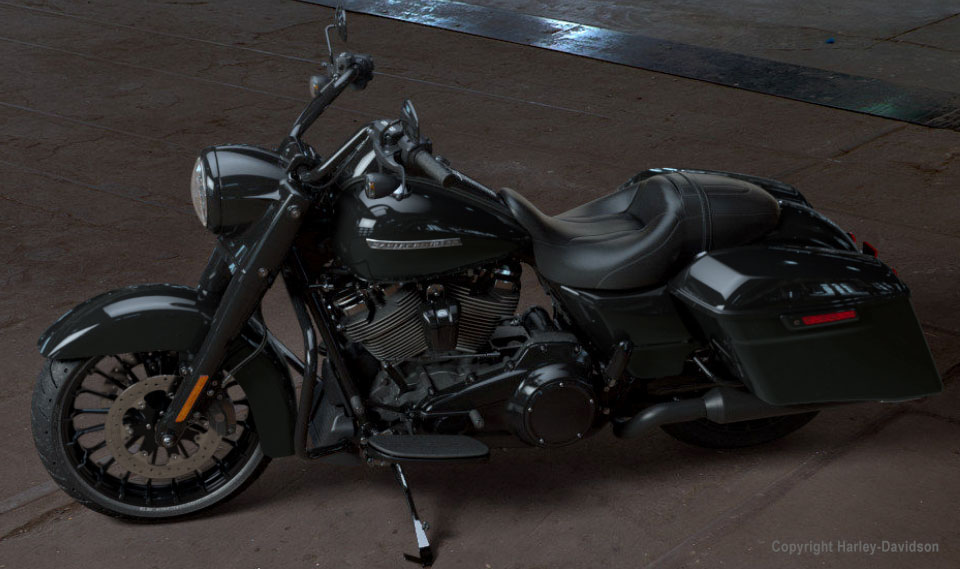
2018 Road King Special in Gloss Black
From the Special pages there was a link to a Harley Screamin' Eagle Stage IV setup. Ah, that was nearly spot on, even the color was perfect. This SE setup so nearly matched the vision I had in my mind that I printed a picture of the SE makeover and the list of parts Harley used to create this rendition, ran up to Kent's Harley-Davidson in Abilene, grabbed the first salesman I could find, whipped out the picture and told the salesman I wanted exactly that!
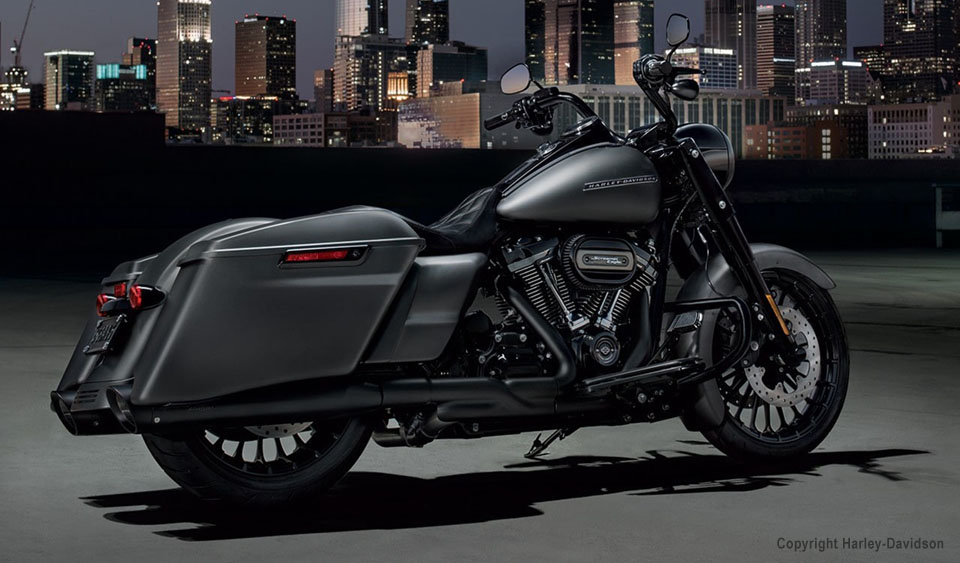
2017 Road King Special with the Screamin' Eagle Stage IV kit installed
I was in luck, they had a Road King Special coming with the first batch of 2018 bikes. The color was not the 2017 Charcoal Gray Denim but it was a close match, something called Industrial Grey Denim. This new color was a tad lighter and seemed to have a touch of rust added to the 2017 Charcoal Gray Denim. With the exception of gloss black Harley seems to create an entirely new pallet for each model year, which I find a bit annoying. Still, watching the way my friends are strangely attracted to each new, glossy color Harley comes out with I suppose it is a good marketing ploy.
The SE Stage IV kit is only available as a dealer modification, there is no factory prepared model with the kit installed. The CVO 114 bikes have a different stroke (longer) and a different cylinder diameter (smaller) so they are not the same engine as one gets from the Stage IV 107 to 114 kit. At least the Stage IV kit engines, when installed by a dealer at time of purchase, are fully covered by the standard Harley new bike warranty.
After expressing some concern regarding the availability of the color matched parts shown in the picture I was told the color matched body parts (radiused front fender, extended side covers, King Tour-Pak trunk) would be ordered immediately and could all be installed as soon as the bike came in the door. I paid the deposit and entered the tedious state of anticipation: the AIM Dealer EXPO was still a couple of weeks away so Harley had not released the new bikes to the dealerships yet.

2017 Road King Special showing the Harley Stage IV modifications and my alterations to the Harley selected parts
To my eye, given my taste in motorcycles, the motorcycle pictured above is a work of art to behold. It cries out to be ridden and ridden hard. Given a patina of multi-colored butterfly wings and dried bug juice it will be the perfect sleeper.
There was still one huge surprise waiting in the wings. I expected the Special to handle more-or-less like the 2012 Road King Classic, but more on that later.
What's Next
In Part 2 I'll cover my initial impressions of the 2018 Road King Special after riding it 1,000 miles.
